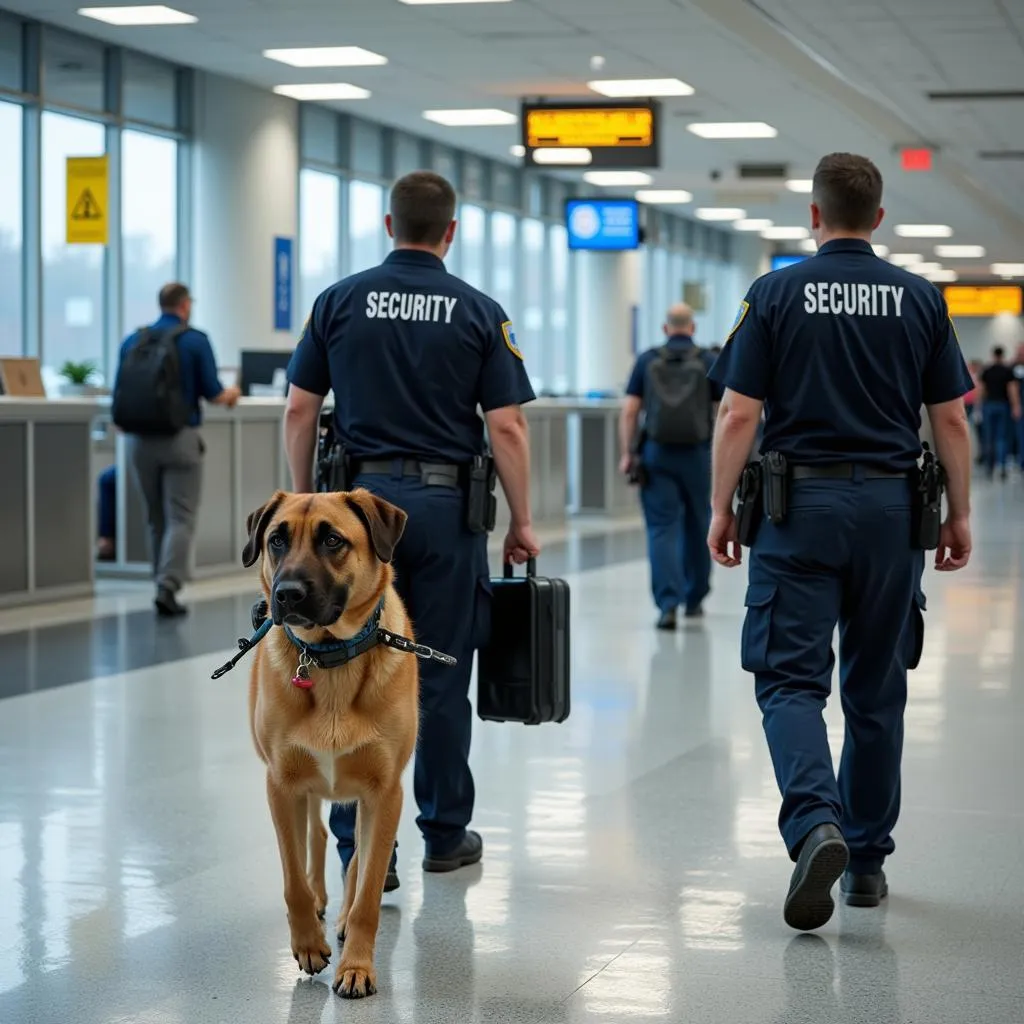Airport security is a topic that weighs heavily on the minds of travelers and aviation professionals alike. While technological advancements and stringent protocols have made flying safer than ever, the threat of bomb threats at airports remains a persistent concern. These threats, whether real or hoax, can cause widespread disruption, economic loss, and psychological trauma. Understanding the history of bomb threats at airports, as well as the measures in place to mitigate them, is crucial for maintaining a safe and secure air travel system.
A Timeline of Terror: Examining Significant Bomb Incidents at Airports
The history of aviation is unfortunately punctuated by instances where the sanctity of airports was violated by acts of terrorism involving bombs. These events, etched in our collective memory, serve as stark reminders of the vulnerability of air travel and the constant need for vigilance.
One of the earliest recorded incidents dates back to 1972, when Palestinian terrorists targeted Lod Airport (now Ben Gurion Airport) in Tel Aviv, Israel. This tragic event, resulting in multiple casualties, highlighted the devastating impact of bombings on civilian air travel.
Another pivotal moment occurred in 1985 with the bombing of Air India Flight 182. A bomb, concealed in a suitcase, exploded mid-air, claiming the lives of all 329 passengers and crew. This horrific act of terrorism, orchestrated by Sikh extremists, exposed the vulnerability of checked baggage and led to significant changes in airport security protocols.
The Lockerbie bombing of Pan Am Flight 103 in 1988 further underscored the threat posed by explosives. A bomb planted in the cargo hold detonated over Lockerbie, Scotland, killing all 259 people on board and 11 on the ground. This tragedy, attributed to Libyan intelligence operatives, prompted a global effort to enhance aviation security measures.
The September 11 attacks in 2001, though not exclusively targeting airports, forever changed the landscape of aviation security. The use of commercial aircraft as weapons of mass destruction led to the creation of the Transportation Security Administration (TSA) in the United States and similar agencies worldwide.
These incidents, while tragic, have been instrumental in shaping the rigorous security measures we see at airports today.
The Motivation Behind Bomb Threats: Understanding the Perpetrators
The motivations behind bomb threats at airports are as diverse as the individuals or groups that make them. While some threats are driven by malicious intent to cause harm, others stem from personal grievances, mental instability, or even a desire for attention.
Terrorism: Groups or individuals driven by ideological, political, or religious agendas may use bomb threats as a tactic to instill fear, disrupt air travel, and advance their cause. The high-profile nature of airports and the global reach of aviation make them attractive targets for terrorists seeking maximum impact.
Extremism: Extremist groups, often motivated by radical beliefs or ideologies, may resort to bomb threats or attacks to draw attention to their cause, intimidate governments, and sow discord within society. Their actions are often driven by a desire to provoke a violent response and further their extremist agenda.
Individual Malice: Some individuals may threaten to use bombs at airports out of personal vendettas, revenge plots, or a desire to inflict harm on others. These individuals often harbor deep-seated anger, resentment, or a sense of injustice, leading them to target symbols of authority or individuals they perceive as responsible for their grievances.
Mental Instability: In some cases, bomb threats may be made by individuals experiencing mental health issues such as delusions, paranoia, or a disconnect from reality. These individuals may not fully comprehend the consequences of their actions or may believe they are acting on a perceived threat or mission.
Hoaxes and Attention-Seeking: Unfortunately, some bomb threats are made as hoaxes, often by individuals seeking attention, disrupting travel plans, or causing chaos. While these threats may not involve actual explosives, they still require a serious response from authorities, diverting resources and causing unnecessary panic.
Understanding the motivations behind bomb threats is essential for developing effective countermeasures, profiling potential threats, and implementing security protocols that address the diverse range of motives driving these actions.
Consequences of Bomb Threats: Beyond the Immediate Chaos
The consequences of bomb threats extend far beyond the immediate disruption and fear they instill. The ripple effects of these threats can be felt throughout the aviation industry, impacting travelers, airlines, and the economy as a whole.
Economic Impact: Bomb threats can bring airport operations to a standstill, leading to flight cancellations, delays, and diversions. This disruption translates into significant financial losses for airlines, airports, and businesses that rely on air travel. The cost of heightened security measures, passenger compensation, and lost revenue can place a substantial burden on the aviation industry.
Psychological Impact: The trauma of experiencing a bomb threat or witnessing its aftermath can have long-lasting psychological effects on travelers and airport staff. The fear, anxiety, and sense of vulnerability associated with these events can linger long after the immediate threat has passed, leading to travel aversion, post-traumatic stress disorder (PTSD), and other mental health challenges.
Reputational Damage: Airports and airlines associated with bomb threats may suffer reputational damage, impacting traveler confidence and brand perception. The negative publicity surrounding these incidents can erode trust in the safety and security of air travel, leading to decreased passenger numbers and revenue loss.
Increased Security Measures: Bomb threats often lead to enhanced security protocols, including more stringent passenger screening, baggage inspections, and the deployment of additional security personnel. While these measures are necessary to enhance safety, they can also result in longer wait times, increased travel costs, and a less convenient travel experience for passengers.
It is essential to recognize that the consequences of bomb threats extend far beyond the immediate incident, impacting the aviation industry, travelers, and the broader economy in profound ways.
 Airport Security Personnel with Sniffer Dog
Airport Security Personnel with Sniffer Dog
Combating the Threat: A Multi-Layered Approach to Airport Security
Ensuring the safety and security of airports and air travel requires a multi-faceted approach that encompasses advanced technology, intelligence gathering, and the vigilance of trained professionals.
Advanced Screening Technologies: Airports worldwide have implemented cutting-edge technologies to detect potential threats. These include:
- X-ray Scanners: Used to screen carry-on luggage and checked baggage for prohibited items, including explosives and weapons.
- Full-Body Scanners: Employ millimeter-wave technology or backscatter X-rays to detect concealed objects on passengers’ bodies.
- Explosives Trace Detection (ETD): Analyzes swabs taken from luggage or passengers to detect trace amounts of explosives.
- Computed Tomography (CT) Scanners: Provide 3D images of luggage contents, allowing for more detailed inspection of potential threats.
K9 Units: Highly trained canines play a crucial role in detecting explosives and narcotics at airports. Their keen sense of smell and ability to navigate crowded areas make them invaluable assets in maintaining airport security.
Profiling and Behavioral Analysis: Security personnel are trained to identify suspicious behaviors and patterns that may indicate a potential threat. This involves observing passenger interactions, body language, and travel itineraries to identify individuals who may pose a risk.
Intelligence Gathering and Sharing: International cooperation and intelligence sharing among law enforcement and intelligence agencies are vital for identifying and mitigating bomb threats. By sharing information about potential threats, travel patterns, and suspected individuals, agencies can work together to prevent attacks and apprehend those involved.
Public Awareness and Reporting: The public plays a crucial role in maintaining airport security. Passengers and airport staff are encouraged to report any suspicious activities, unattended baggage, or security concerns to authorities immediately.
The fight against bomb threats requires a constant evolution of security measures, adapting to new threats and incorporating the latest technologies. By working collaboratively and remaining vigilant, the aviation industry can strive to create a safer and more secure environment for all.
FAQs: Addressing Common Concerns about Airport Bomb Threats
Q: What should I do if I see something suspicious at an airport?
A: Report it immediately to airport security personnel or law enforcement officers. Do not hesitate to speak up, even if you are unsure about the severity of the situation. It is always better to err on the side of caution when it comes to airport security.
Q: How effective are airport security measures in detecting explosives?
A: Airport security measures have significantly evolved over the years and are designed to detect a wide range of explosives and other prohibited items. However, no security system is foolproof, and the effectiveness of these measures depends on several factors, including the type of explosive, the skill of the perpetrator, and the vigilance of security personnel.
Q: What are the penalties for making a bomb threat at an airport?
A: Making a bomb threat at an airport is a serious federal crime with severe penalties, including hefty fines, imprisonment, and a criminal record. The specific penalties vary depending on the nature of the threat, intent, and any resulting harm.
Q: Are there mental health resources available for individuals struggling with thoughts of violence or making threats?
A: Yes, numerous mental health resources are available for individuals experiencing thoughts of violence or struggling with impulses to make threats. If you or someone you know needs help, reach out to a mental health professional, crisis hotline, or local law enforcement agency for assistance.
Navigating Air Travel in an Era of Heightened Security
While the threat of bomb threats at airports remains a reality, it is essential to remember that flying is still one of the safest modes of transportation. By understanding the history of these threats, the measures in place to combat them, and the role we all play in maintaining airport security, we can approach air travel with confidence and a commitment to safety.
If you’re looking for information on specific airport security procedures, navigating transportation to and from airports, or planning your next trip, be sure to check out these helpful resources:
Remember, security is a shared responsibility. By working together, we can create a safer and more secure air travel environment for everyone.
Need assistance with your travel plans or have questions about airport security? Contact us at +13089626264, email us at [email protected], or visit us at 404 Bothwell St, Oxford, NE 68967, USA. Our dedicated customer support team is available 24/7 to assist you.

